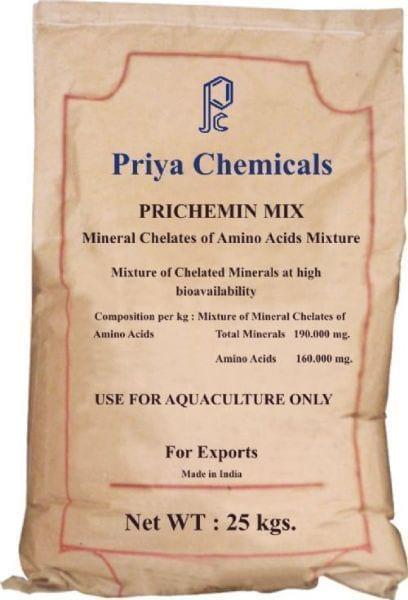Explore all the information on
Aquaculture health
Welcome to the page about Aquaculture health of Engormix; a source of knowledge on Aquaculture health.
Introduction Penzlin (1977) cited that blood constituents of fish are variable than those of the terrestrial animals. Abdelhamid (1991) argumenta for the variation between fish and terrestrial animals to the huge number of fish species (ca. 25.000) and strains (40.000) in comparison with the mammalian species (ca. 4.500). Additionally, Abdelhamid (2009) cited that fish are variable in their morphology, biology, anatomy, physiology, reproduction,...
Comments : 0
Recommendations: 2
1. Introduction Mycotoxins are natural contaminants commonly found in plant-derived foodstuffs, mainly cereals and their by-products. Since these raw materials are added as ingredients in feed formulation for different animal species, including cultivated fish, the risk of mycotoxin contamination in feed for aquaculture has increased, thus introducing contaminants (i.e., mycotoxins), which were not previously identified in fish tissues [1]. Diverse studies reported mycotoxin...
Comments : 0
Recommendations: 0


PRICHEMIN MIX
Priya's PRICHEMIN MIX is a mineral supplement for aquaculture. It consists of a mix of mineral chelats from aminoacids
Suggested link
Hey all. New here. I'm currently raising some tilapia as part of an aquaponics system, but I'm using seachem prime to get rid of chlorine and chloramines. I hear that seachem prime makes my fish unsuitable for human consumption. My city water has chloramines (and chlorine) in it. What can I do to get rid of the chloramines whilst keeping the water suitable for fish for human consumption? Thanks!...
Comments : 0
Recommendations: 0
What are the primitive measure to be taken to increase the survival rate in shrimp ponds. Last culture survival rate was less than 45%. Please suggest the measure to be taken. Thanks in Advance ...
Comments : 0
Recommendations: 0


PRICHEMIN MIX
Priya's PRICHEMIN MIX is a mineral supplement for aquaculture. It consists of a mix of mineral chelats from aminoacids
Suggested link
1. Introduction Nanoscience and nanotechnology are the study and application of extremely small things and can be used across all the other science fields, such as chemistry, biology, physics, materials science, and engineering. Nanomaterials and nanoparticles are emerging as increasing scientific research due to their potential for achieving specific processes and selectivity, especially in biological and pharmaceutical industries [1-7]. The use of biological entities...
Comments : 0
Recommendations: 0
INTRODUCTION Nanotechnology and nanoscience are the study of production, manipulation, and application of materials ranging in size from less than a micron to that of individual atoms [1]. The major key aspect of nanotechnology involves in the development of rapid and reliable experimental protocols such as biological and chemical processes for the synthesis of nanomaterials over wide range of chemical compositions, sizes, high monodispersity, as well as large-scale production...
Comments : 0
Recommendations: 1


PRICHEMIN MIX
Priya's PRICHEMIN MIX is a mineral supplement for aquaculture. It consists of a mix of mineral chelats from aminoacids
Suggested link
Otavio Castro, Global Species Manager Aquaculture for Phileo Lessafre, explains the main benefits of Prosaf®, a premium yeast extract obtained from the primary culture of a proprietary Saccharomyces cerevisiae baker’s yeast strain. The yeast cells are autolyzed before centrifugation to separate the yeast extract from the yeast cell wall....
Comments : 5
Recommendations: 6
Introduction Nano particles exhibit unique biological, physical and chemical properties based on specific characteristics such as shape, size, distribution and surface morphology. Synthesis of nano particles through biochemical routes, using plant and algal extracts as reducing and capping agents, has received special attention among others, due to maintaining an aseptic environment during the synthetic process [1-7]. Therefore, medicinal plants and algae having well established...
Comments : 0
Recommendations: 0


PRICHEMIN MIX
Priya's PRICHEMIN MIX is a mineral supplement for aquaculture. It consists of a mix of mineral chelats from aminoacids
Suggested link
Olivier Decamp (INVE Aquaculture) discussed the issues and challenges in this activity, as well as alternatives and solutions....
Comments : 0
Recommendations: 2
Introduction Clarias gariepinus , a major freshwater fish in Nigeria, is of growing economic value in African aquaculture industry [8, 9, 13]. According to Macharia et al. [11], the hatching rates of Clarias gariepinus eggs in many hatcheries in Africa are erratic, ranging from 8.0 to 70%, depending on the degree of sophistication of the management of the hatcheries. Since hatchery production is the...
Comments : 0
Recommendations: 0


PRICHEMIN MIX
Priya's PRICHEMIN MIX is a mineral supplement for aquaculture. It consists of a mix of mineral chelats from aminoacids
Suggested link
Background Infectious pancreatic necrosis virus (IPNV) is the causative agent of a contagious fish disease by the same name and is responsible for economic losses in the aquaculture industry worldwide. In 2015, this viral agent represented about 30% of disease diagnoses reported from Chilean salmon farming centers and caused about 8% of pathogen-associated mortalities [1]. Infections with IPNV mainly occur in the freshwater or fry first-feeding stages, but fingerlings of most...
Comments : 0
Recommendations: 0
1. Introduction Teleosts fish species are one of the largest sources of protein for humans through their extensive production in aquaculture. There has been a growing trend in the last decades into the use of genomics to improve our disease control and prevention strategies against various diseases infecting different fish species in aquaculture. As such, genomics studies in aquaculture have evolved from reductionist single gene sequencing to high throughput next (HTS)...
Comments : 0
Recommendations: 0


PRICHEMIN MIX
Priya's PRICHEMIN MIX is a mineral supplement for aquaculture. It consists of a mix of mineral chelats from aminoacids
Suggested link
1. Introduction Nanotechnology involves the characterization, fabrication of structures, materials or particles that have at least 1–100 nm in length. The field of nanotechnology is one of the most active research areas in modern materials science. Nanoparticle research is an ever-increasing scientific research interest, especially over the last couple of decades. The most effectively studied nanoparticles today are those made from noble metals, in particular Ag, Pt, Au...
Comments : 0
Recommendations: 2
1 . INTRODUCTION In intensive Pangasius fish farming in Mekong delta, fish disease causes heavy damage and fish farmers often spent 5-10% production cost for disease prevention, mainly antibiotics for prophylactic and therapeutic treatments (Hung et al ., 2007). The antibiotics residue in fish fillet raises a concern for consumers; therefore, prophylactic strategies could be the best solution to...
Comments : 10
Recommendations: 1


PRICHEMIN MIX
Priya's PRICHEMIN MIX is a mineral supplement for aquaculture. It consists of a mix of mineral chelats from aminoacids
Suggested link
INTRODUCTION Shrimp culture is now days developed intensively with upgraded technology for higher and successful production. In many occasions shrimp culture are affected by various diseases and experienced in loss of crop or reduced the production level by various reasons. Intensive and semi -intensive aqua farming accompanies several disease problems often due to opportunistic pathogens as evident from general...
Comments : 53
Recommendations: 7
Water quality is determined by some variables like temperature, transparency, turbidity, water colour, carbon dioxide, pH, alkalinity, hardness, unionized ammonia (NH3), nitrite and nitrate (Saeed, 2013; Saeed and Abdel-Mageed, 2011; Chandra Das et al ., 2005). For improving water quality and decreasing ammonia toxicity, there are several possible methods including zeolite addition (U.S.EPA, 2007; Shalaby, 2007). Zeolite addition has been used successfully in freshwater systems to...
Comments : 8
Recommendations: 5


PRICHEMIN MIX
Priya's PRICHEMIN MIX is a mineral supplement for aquaculture. It consists of a mix of mineral chelats from aminoacids
Suggested link
Discuss about catfish diseases in indian subcontinental ...
Comments : 7
Recommendations: 0
There is a need to increase biosecurity measures in the shrimp aquaculture industry as part of the 'new normal'. It is not a secret that the shrimp industry in many countries has suffered considerable economic losses due to a number of different shrimp diseases including the acute hepatopancreatic necrosis disease (AHPND). According to OIE, AHPND has been officially reported in China (2010), Vietnam (2010), Malaysia (2011), Thailand (2012), Mexico (2013) and the...
Comments : 7
Recommendations: 4


PRICHEMIN MIX
Priya's PRICHEMIN MIX is a mineral supplement for aquaculture. It consists of a mix of mineral chelats from aminoacids
Suggested link
Introduction Global aquaculture production has been steadily increasing over the last decade. Asian countries like Taiwan, Indonesia, Thailand and India have emerged as global leaders in shrimp production. In order to bridge the gap between world demand and supply of shrimp, many...
Comments : 1
Recommendations: 5
Solution for Zoea 2 problems in Vannamei hatcheries ...
Comments : 0
Recommendations: 0












